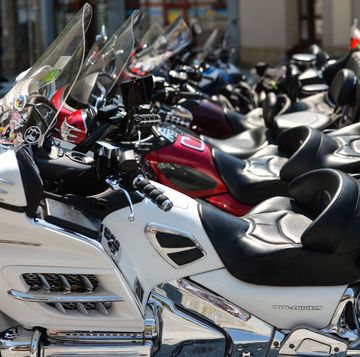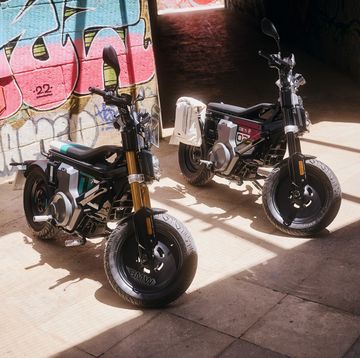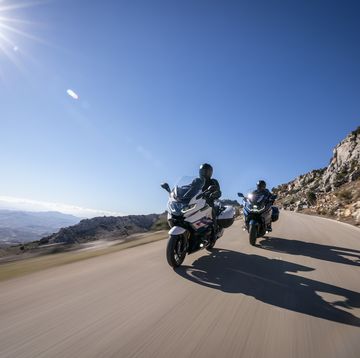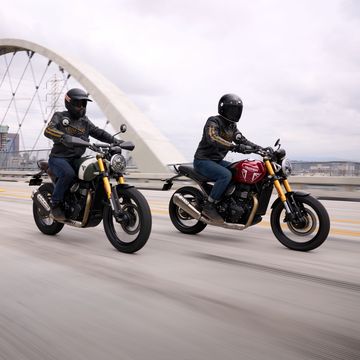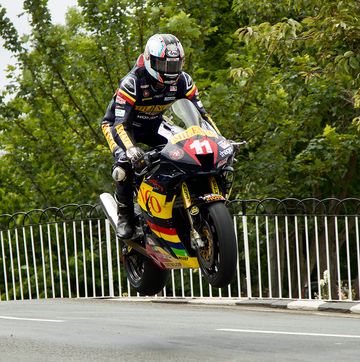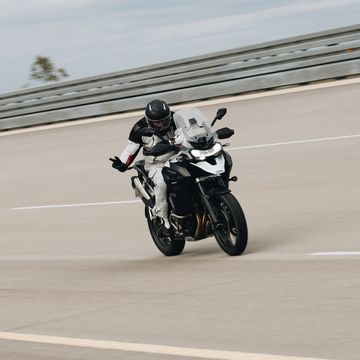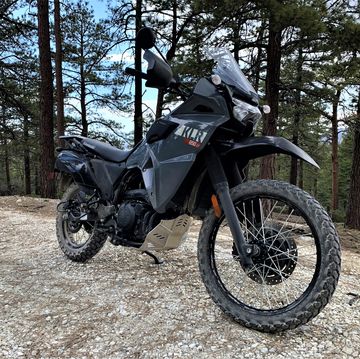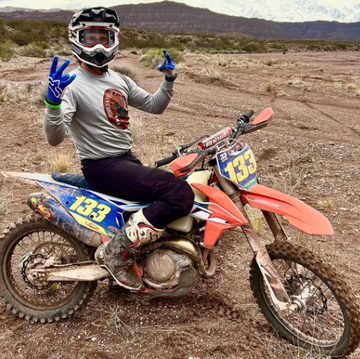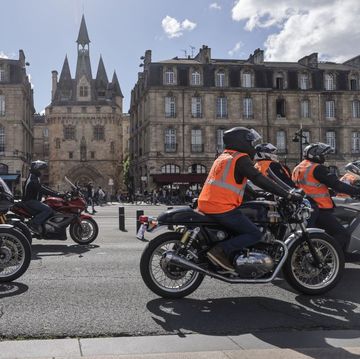Way back in 1979, if any of you were alive then, I put thousands of miles on a Kawasaki KZ650. It wasn’t even my bike, it was my brother’s. Our dad, who clearly liked my brother better than he liked me, and I can’t say I blame him, had loaned my bro the then-mind-boggling sum of $2,200 for the purchase, repayable at $65 a month. By my calculations, he would have that paid off in 782 years. Or something. That money represented at least 300 years’ worth of burger flipping and was about as easy a figure to grasp for my then-young self as the national debt or the gross domestic product. This was shortly after Nixon had taken everyone off the gold standard -- and yet, while economists had plenty to say about that, they were remarkably silent when it came to my brother’s magnificent moto loan. The Kawasaki Finance Lend Lease Deal was way more impressive to me.
My brother was a couple years ahead of me in life, so he had access to high-dollar income levels from certain fast-food restaurants that I didn’t yet have. Those places wouldn’t hire you until you had hit 16. I was in between the paper-route income level and what soon became a lucrative career at Jack in the Box. That is to say I didn’t have enough money to buy my own motorcycle -- that would come when the high-roller Jack in the Box money poured in that allowed me to buy a BSA 650. So there I was with what I’m pretty sure was some kind of learner’s permit but no motorcycle (let alone a car, though my girlfriend at the time had a Pinto, so I had that going for me). Which meant that at this particular point in time, I was dependent on my brother’s copious largess for two-wheeled fun. Luckily, I had the nicest big brother in the world, and he let me ride the mighty and powerful KZ650 way more than I deserved.
As far as my 15-and-a-half-year-old self thought, it was the most magnificent piece of machinery ever made. My bro had already gone through a Yamaha 175 Enduro (which you could launch ridiculously high off jumps, scaring the crap out of yourself over and over) and a Honda 350 Enduro, both of which I had also talked my way onto. This was in the days before anyone thought anything was dangerous. Apparently, no one got hurt throughout the entire 1970s. Amazing.
“That was a great bike,” he said when I called him yesterday. “Plenty of power. Terrific bike.”
So isn’t it ironic (Ed note: Is it?) that just yesterday, I spent the day going up and down Angeles Crest Highway in the modern version of that terrific bike, the 2017 Kawasaki Z650? The original model was only called the “KZ”650 in the U.S. market. In the rest of the world, even in 1979, it was the Z650, which is what Kawasaki calls it now. The 1979 was a transverse-mounted inline four making 62 hp and 41 lb-ft of torque. This was only a few years after Honda had introduced the world-changing 750 Four, which we had in poster form on the wall of our room (we also had brochures from the Honda dealer in Torrance, California). The ’79 KZ weighed 465 pounds. The current Z650 weighs 406 pounds (410 with ABS, something that was pure science fiction in 1979), but feels like it weighs about 46 pounds. It feels small and light and tossable, like you could pick it up and put it in your pocket. I recall the KZ650 felt pretty heavy in all situations: leaning into corners, powering out, accelerating, braking, everywhere. The new Z has an easy-revving, upright parallel twin engine, and while Kawasaki in the U.S. doesn’t list hp, when the bike debuted at EICMA in Italy last year, power was listed at 68. Official torque figure of the new bike is 48.5.
It's amazing to me that in 38 years, so much is so close to the same, at least on the spec sheet. Yet the feel of the new bike, as you would expect, is way quicker, the steering way more precise, the braking and handling far, far more immediate. The ’79 was almost a cruiser, the 2017 is a sport bike, a delight going into and out of Highway 2’s wonderful curves. The breadth of the power and torque bands is so wide, you could almost do the whole hill climb in sixth. As it was, I was going from fifth to sixth the whole way up, only occasionally dipping down into fourth. It was a blast. I sport-biked the KZ650 back in the day, too. In fact, that bike was where I learned the thrill of cornering. We lived in San Pedro, but back in those days, you could get into Palos Verdes, with all its hills and winding roads, without a permit. I’d spend hours on the KZ650 looking for corners just to lean into them and power out.
They were both great bikes, but modern technology makes for a much wider and more usable powerband -- and for so much more speed, stability and safety.
After my brother had his KZ650 a couple years, our friend Danny let each of us ride his new Yamaha XS Eleven, and that was some mountain of torque, that thing. You felt about like that guy on the rocket sled out at Edwards. So my brother sold the KZ650 and bought a Yamaha XS Eleven. For my part, after a short, happy life, my BSA blew up. I sold it for $35 to A&A Salvage in Wilmington, went to college and became the famous writer you see here. Our dad passed away several years ago. I never asked him for a motorcycle loan or any loan. I've paid cash for everything I ever owned, except this house I'm typing in right now. So maybe that was some kind of helpful life lesson, who knows? I think maybe the motorcycles taught us more than anything else in life: don't go into the corner faster than you can come out, wear a helmet, watch out for drunken idiots... My brother still has motorcycles and rides them every day. But he, and I, still recall with fondness that 1979 KZ650.
“It was a good bike,” my bro said on the phone yesterday. “I have a lot of good memories of it.”
There are bikes -- and memories -- out there waiting for you, too. Go find them.
Vehicle Model Information
BASE PRICE: $6999
AS TESTED PRICE: $7399
POWERTRAIN: Transverse-mounted upright parallel twin, six-speed manual, rwd
OUTPUT: 68 hp (Euro spec), 48.5 lb ft at 6500 rpm
CURB WEIGHT: 406 pounds
OPTIONS: ABS $400
PROS: Lightweight, flingable, fun
CONS: The Z900 should be even more fun





